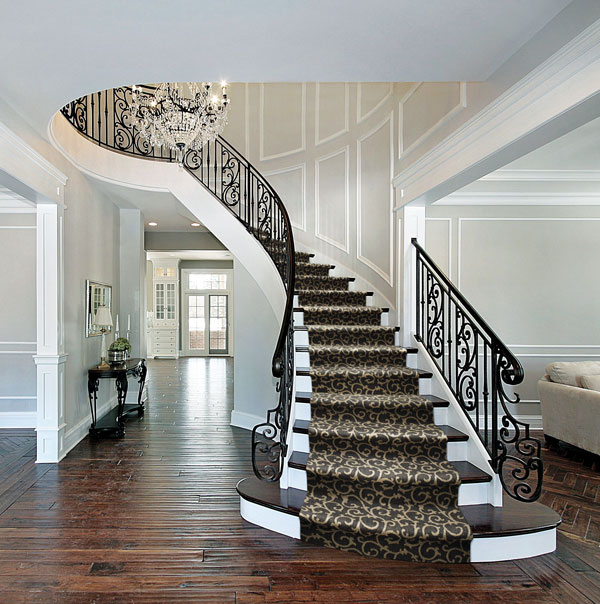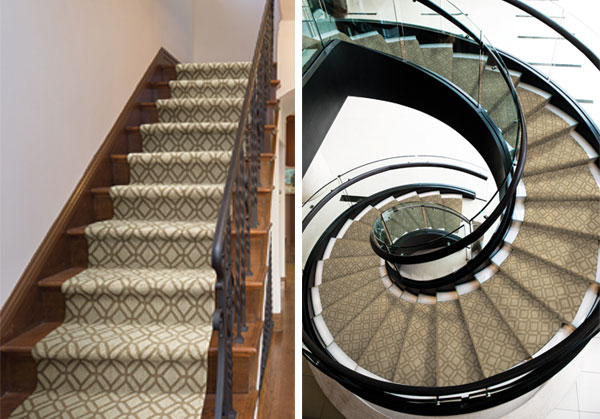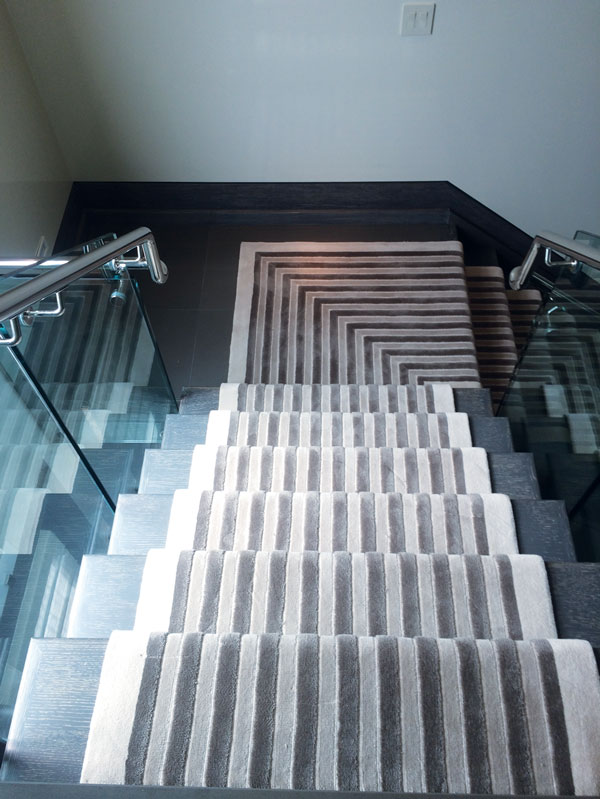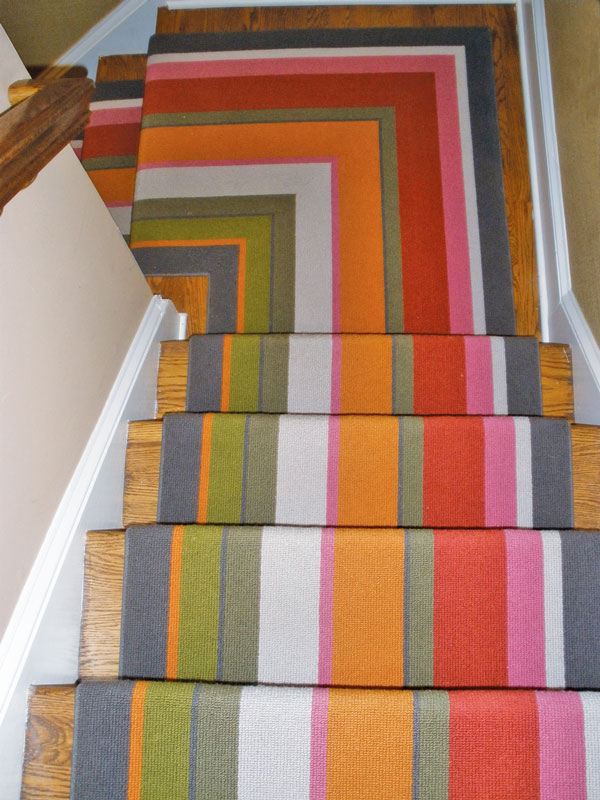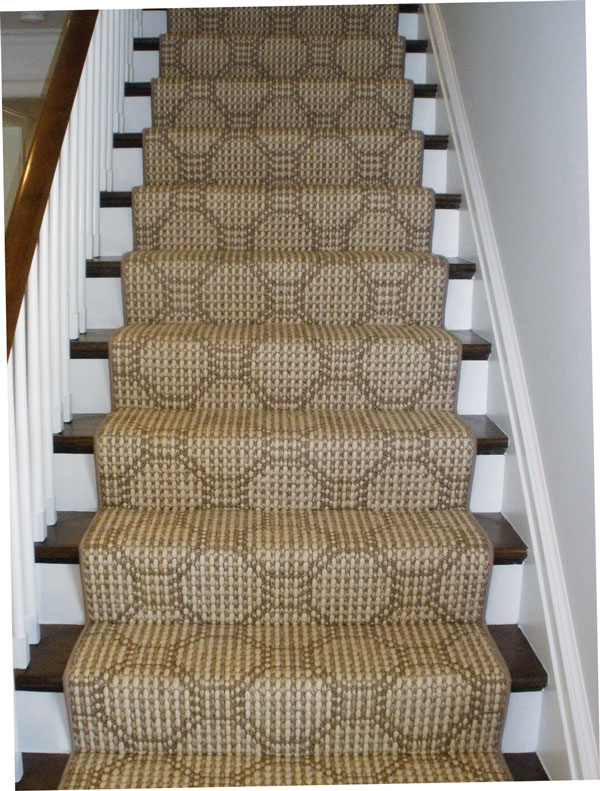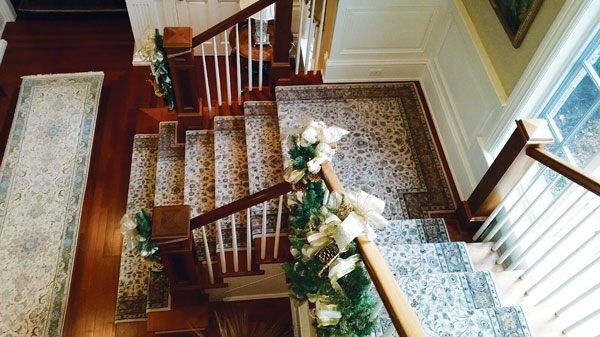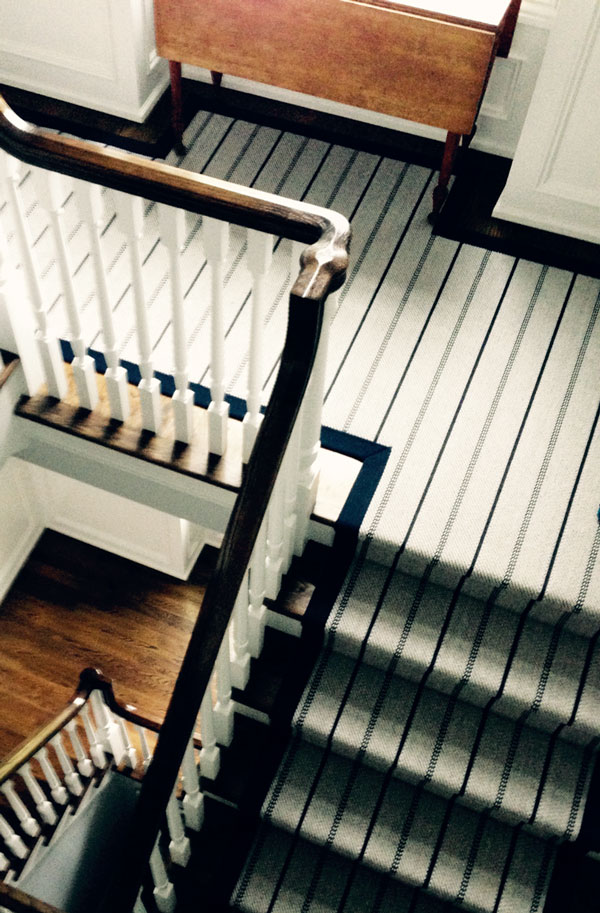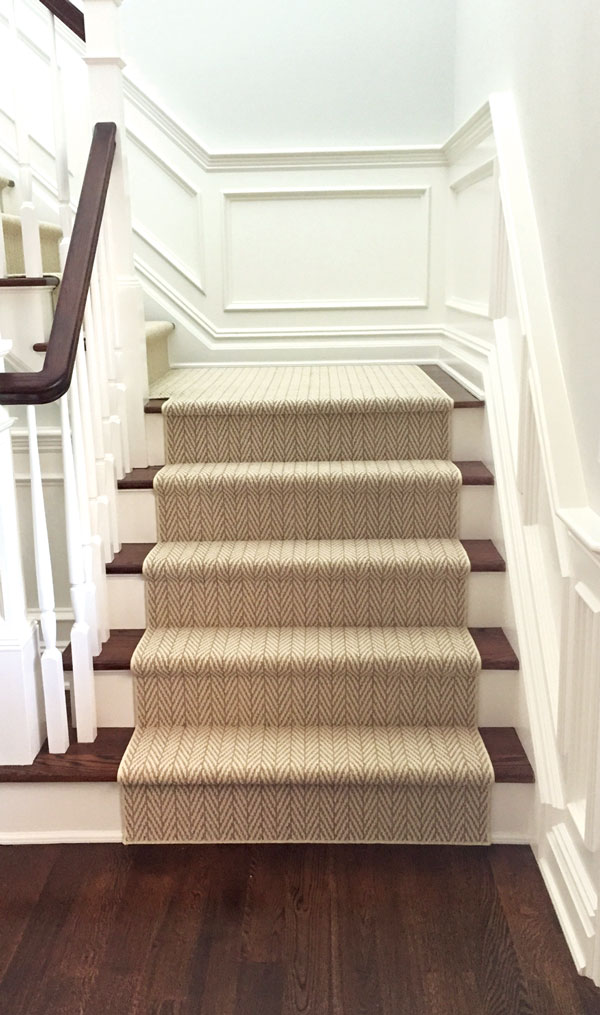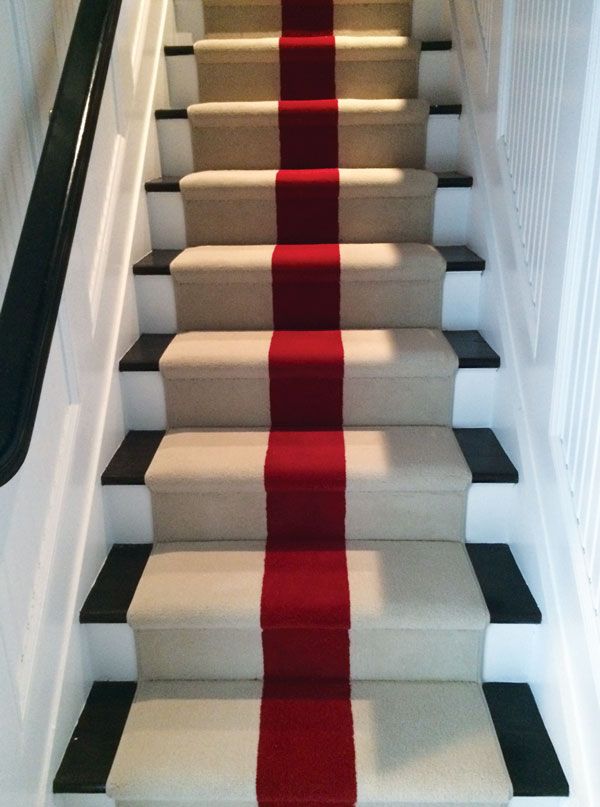Step Right Up
Writer Mary VinnedgeGet off on the right foot with your stair carpet.
Stair carpet satisfies functional needs — enhancing safety and reducing noise — while making a huge interior design statement. Donna Dwyre of Cove Carpet One Floor & Home in Summit, Freda Hanono of Weinstein Carpet and Flooring in Little Silver and Lori Vaynstein of Worldwide Wholesale Floor Coverings in Edison, all located in New Jersey, offer advice for avoiding missteps when carpeting your stairs.
As with any project, it’s safety first. Dwyre says to shop for a low, tightly constructed carpet for safety and wear. Dwyre and Hanono further advise homeowners to avoid carpet with big loops, which can catch spikey heels and pets’ nails. Vaynstein says natural sisal can be slippery (but other fibers can imitate sisal if that’s the look you want). Hanono says wool gives the best traction.
Padding should be firm. “You don’t want to bounce on the stairs,” Dwyre says. “Use a dense, low felt cushion.” Hanono recommends a 32- to 40-ounce felt or hair-and-jute pad. Vaynstein points out that the pad’s purpose is to prolong the life of the carpet and that it should cover only the treads, where the pounding occurs.
Keep it Simple
Pattern is a crucial consideration for stairway carpets. “You don’t want too much ‘noise,’” as Dwyre puts it. “You have to pay attention to scale.” Bold patterns can camouflage step edges and, therefore, compromise safety. A large, high-contrast design also can cause optical effects that seem to move and are unpleasant to look at. And, finally, a large pattern will be more difficult to install attractively because it’s hard to match on the small surface of treads and risers as well as on the mitering required for curves and turns, Dwyre says.
Fiber Advice
Wool earns kudos as the longest-wearing fiber for carpeting, but dense, tightly constructed nylon and polypropylene carpets are worthy alternatives.
Why wool? “It’s naturally resilient,” Vaynstein says. “If you install a wool runner, it will always be a classic in your home.” Says Dwyre: “Wool Axminster carpet—often woven in Oriental patterns with beautiful clarity of color—is durable enough for commercial applications, making it an outstanding choice for anyone.”
Durability
A carpet’s method of construction is another factor in longevity. “Wilton or needlepoint-constructed carpets will not be as durable as other types of construction,” Hanono says, “but customers often choose them anyway for their beautiful patterns and color combinations.” And patterns are more forgiving of stains; animal prints are especially popular.
Want more subtlety? “Texture is a hot look,” Vaynstein says. “It’s simple and clean. You can bind it on site,” introducing a contrasting color with the binding if desired. And the shading in textured carpets will hide some soil and stains.
Coordinating vs. Matching
Another trend: letting the stair carpet be a solo selection instead of repeating in adjacent spaces. You can still choose to use one carpet everywhere, our experts say, but the majority of homeowners pick something that’s “coordinating instead of matchy-matchy,” Vaynstein says. Dwyre says many homeowners have hardwood going down halls, so in the upstairs bedrooms, all of the home’s residents—kids and parents—pick their own bedroom carpet colors that meet up with the wood. The hallway often will be designed with a wood reveal, with the carpet bound on site, to give the impression of a custom area rug, yet it’s securely installed, she says.
Where it Goes
As far as what to cover with carpet, most homeowners today are revealing the edges of treads and risers as well as the stringers.
When the steps widen as they meet up with the first floor, the carpet may or may not widen along with them. Hanono says most of her customers widen the carpet in these circumstances. But Vaynstein says that “90 percent of the time, we keep it the same width, although you might want to gradually widen it.” Dwyre suggests asking your installer about the ideal dimensions for your chosen carpet on your particular stairs. It never hurts to get an expert opinion on this stair-carpet detail…and others.
Freelance writer Mary Vinnedge hopes to redo her stair carpet soon, so she was thrilled to get paid to do the research!
KEEP IT CLEAN
Different fibers dictate different cleaning methods. Generally, Lori Vaynstein of Worldwide Wholesale Floor Coverings recommends professional steam cleaning at least once a year. “The cleaning crew can use a little tool that’s designed for treads and risers to get into the crevices.” Hire a trusted company that will select the best products and techniques for cleaning your carpet based on its fiber and construction.
To tackle spots, Freda Hanono of Weinstein Carpet and Flooring recommends Host and Milliken’s Capture products. On wool carpet, she says a capful of Woolite diluted in an 8-ounce cup of warm tap water is an effective cleaning solution.
“Never use household soap to spot-clean stains in carpet,” Hanono says. “One, you will never be able to fully remove all the soap you applied, and two, when that spot ever comes in contact with moisture, the stain will reappear over and over again.”
WHAT ABOUT STONE STEPS?
Steps made of stone (often marble) pose a carpet quandary. It’s possible to install carpet if tackless strips are cemented to the stone, says Freda Hanono of Weinstein Carpet and Flooring. But if the homeowner ever wants to return to stone later, “lifting the tackless strips off the stairs can damage the finish of the stone…and possibly break parts of the slab,” she warns.
If you need a less slippery path on stone steps, safety may trump the fact that the process isn’t fully reversible.

